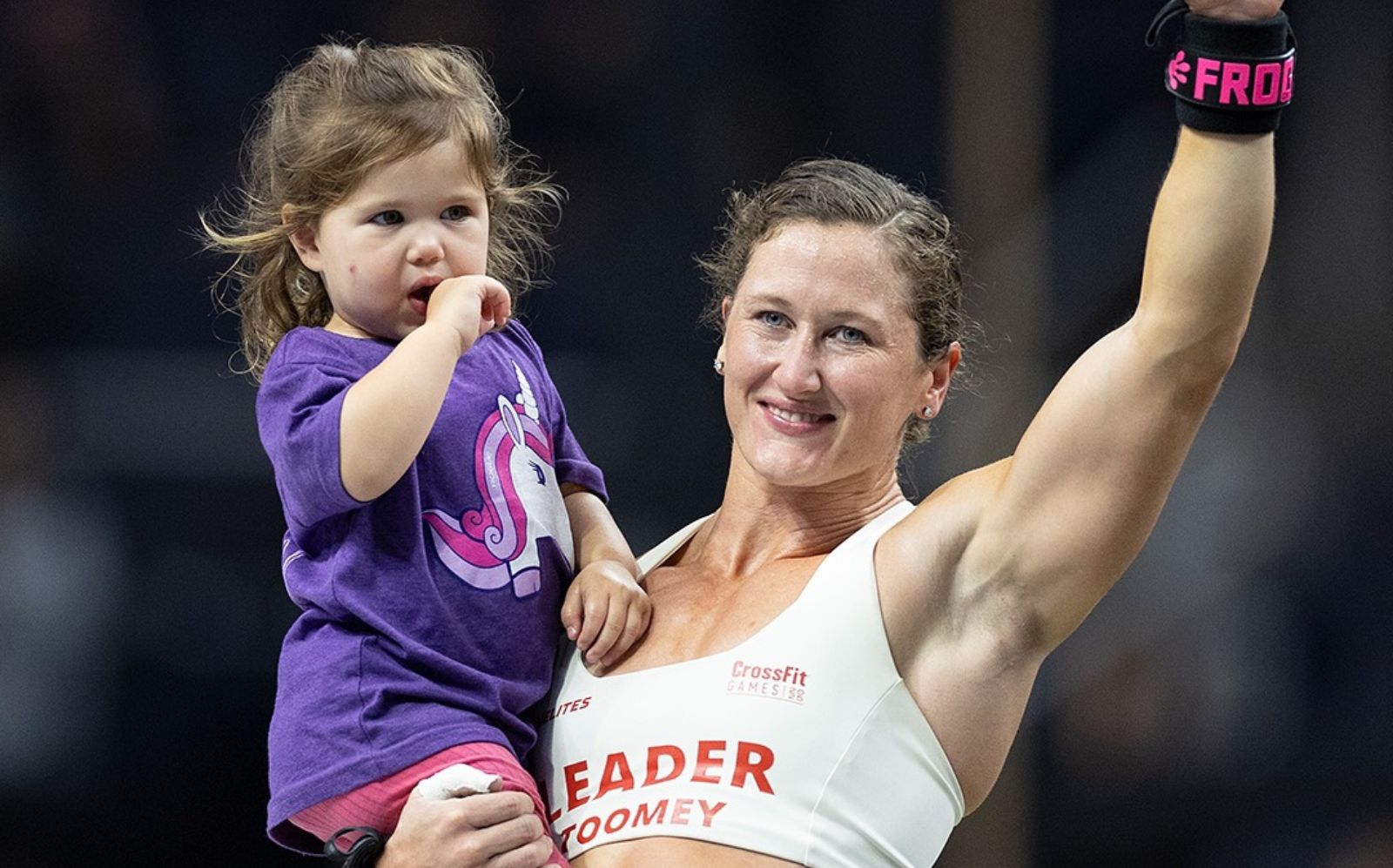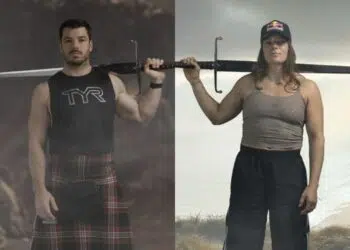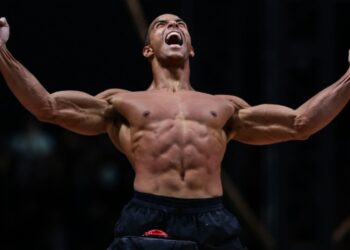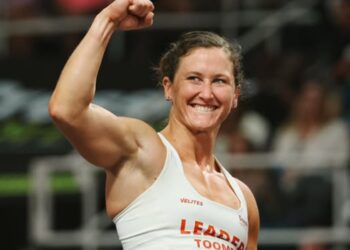The barbell overhead squat is not just an exercise; it’s a comprehensive test of strength, coordination, stability, mental fortitude, and movement integrity. As an ACE-certified fitness professional with over 5 years of experience in health and fitness content creation, I can affirm its importance in physical training. This exercise is a critical component of the snatch in weightlifting, involving squatting with a loaded bar overhead.
The benefits of incorporating the barbell overhead squat into your routine are numerous. From personal training experience and extensive knowledge in exercise guides and training techniques, I’ve observed significant improvements in musculature among those who practice this movement. It effectively targets the quads, butt, hamstrings, shoulders, back, and core muscles, offering a total-body workout.
In this guide, I, will delve into the nuances of the barbell overhead squat. Drawing from my specialized expertise in health and fitness content, including exercise guides, training techniques, and workout advice, I aim to provide comprehensive and reliable information to enhance your fitness journey.
How To Do Barbell Overhead Squat
Proper technique is imperative to ensure you perform the barbell overhead squat safely and efficiently. Here’s a step-by-step on how to do it.
- Start by unracking the barbell on your traps like a back squat. Keep your shoulder blades back, and core tight.
- Take a wider than shoulder-width stance with your hands even wider, using an overhand grip. You can find a comfortable position for you as this is only a suggestion.
- Squat down just a little and drive through your feet to help propel the bar overhead while simultaneously extending your arms. Keep your torso upright, do not lean forward during this part.
- Focus on keeping the elbows slightly out and forward with the arms slightly externally rotated.
- Maintain a completely vertical line from the bar to your feet. Do not lean forward at the hips.
- Squat down until your upper legs are slightly lower than parallel to the floor and then stand back up keeping the bar overhead and repeat repetitions as desired.
Muscles Worked
So as mentioned, the barbell overhead squat is a total-body movement and therefore, essentially all muscles have to work together to ensure you perform the lift safely and effectively. We listed each muscle that this exercise works below with a little description of each.
Quadriceps (thighs)
Level Up Your Fitness: Join our 💪 strong community in Fitness Volt Newsletter. Get daily inspiration, expert-backed workouts, nutrition tips, the latest in strength sports, and the support you need to reach your goals. Subscribe for free!
Squats are considered the king of lower body exercises for a reason. It’s the go-to for building massive quadriceps. The quads are the large four-headed muscle on the front of the upper leg and many people simply refer to it as the thigh. The function of the quads is knee extension and hip flexion.
Hamstring and glutes
The hamstrings and glutes are going to be activated during any compound exercise. The hamstrings extend the hips and flex the knee while the glutes (butt muscles) extend and externally rotate the thighs.
Core
Without a strong core or midsection, you can pretty much forget about doing any type of heavy lifting, much less the barbell overhead squat or any of its variations.
The core consists of the abdominals, obliques, and back muscles, located between the lower and upper body. These muscles have several functions such as flexion, extension, and rotation of the trunk. But the deep core muscles actually compress the contents underneath and allow you to keep your midsection rigid so that you don’t collapse when the body us bearing a lot of pressure.
Back
From the trapezius muscles near the neck to the rhomboids just below, in addition to the lats and spinal erectors, the barbell overhead squat recruits all of these muscles that assist in the function of the posterior chain (backside of the body)
Shoulders
Level Up Your Fitness: Join our 💪 strong community in Fitness Volt Newsletter. Get daily inspiration, expert-backed workouts, nutrition tips, the latest in strength sports, and the support you need to reach your goals. Subscribe for free!
The shoulders and scapula (shoulder blades) are important muscles for pressing and holding a bar overhead. You have to obviously have strength but scapular stability is a must if you are to perform this exercise safely and effectively. The shoulders are a ball and socket joint and for them to be able to raise the arms overhead with optimal mobility, you need to keep your upper back muscle back and tight.
Triceps
The triceps function to extend the elbows and therefore play an important role when the arms are extended overhead.
Grip
A good, strong grip is even more important when you’re having to hold a bar overhead. The forearm muscle will really be challenged here and that’s why it’s good to start light and slowly work your way up to prevent injury to the wrists.
3 Barbell Overhead Squat Variations
Having some variety and options in your training is definitely a good thing. Here are a few great ones that we think you’ll like.
Dumbbell overhead squat
Usually, anything that you can do with a barbell, you can do with a dumbbell. It just requires more stabilization and coordination. This is actually a good thing though because you improve these areas which will also improve your performance as a result. In addition, dumbbells are effective training tools for identifying and correcting imbalances.
So, you could actually do these with one arm and it would challenge lateral stability.
Kettlebell overhead squat
Kettlebells have benefits of their own due to the design which allows the weight to move around the hand, and therefore, you need even more stability than you would with dumbbells. Not to mention, there are so many great things that you can do with a kettlebell. In fact, you can start the overhead squat variation with the kettlebell swing of which we’ve provided an example below.
Snatch
So it’s probably not a variation but the snatch is an Olympic lift that actually involves the overhead squat for the second part of the movement. It also involves all muscles of the bar and is going to be a more challenging lift overall. However, once you get it down pat, it’s a really great movement to add to your training for functional performance.
How To Include The Barbell Overhead Squat In Your Training
There are definitely functional benefits of the barbell overhead squat because the body has to use all muscles together for effective performance. Therefore, we’d say to include it at the beginning of one of your workout sessions to really work on full-body lifting, stability, coordination, balance, and movement integrity.
There’s no perfect rep range either because the more proficient you become at this exercise by doing lots of reps, the more you’ll benefit. Of course, you do need to implement progressive overload though and if you’re looking to really increase your overhead squat, then you should include heavy weights and low rep sets.
But moderate rep ranges are ideal for increasing muscle gains and high reps are good for total-body conditioning. For example, if you do CrossFit then perform upward of 20 reps could prove to be very beneficial.
But the most important thing to do is to start light and just do it!
Wrapping Up
The barbell overhead squat is a great exercise and we think you’ll find it to be extremely beneficial for your development, and performance. It may not be easy at first but you know what they say, “perfect practice makes perfect”.
Follow the form tips and make sure you’re making necessary adjustments to ensure you get the most out of this movement.
Article Updates Timeline:
Our editorial team experts constantly update the articles with new information & research, ensuring you always have access to the latest and most reliable information.
January 6, 2024
Updated By
Matthew Magnante, ACE
Fact Checked By
Dr. Malik
August 13, 2020
Written By
Matthew Magnante, ACE
Reviewed By
Editorial Team
Interested in measuring your progress? Check out our strength standards for Overhead Squat, Snatch, Squat.








